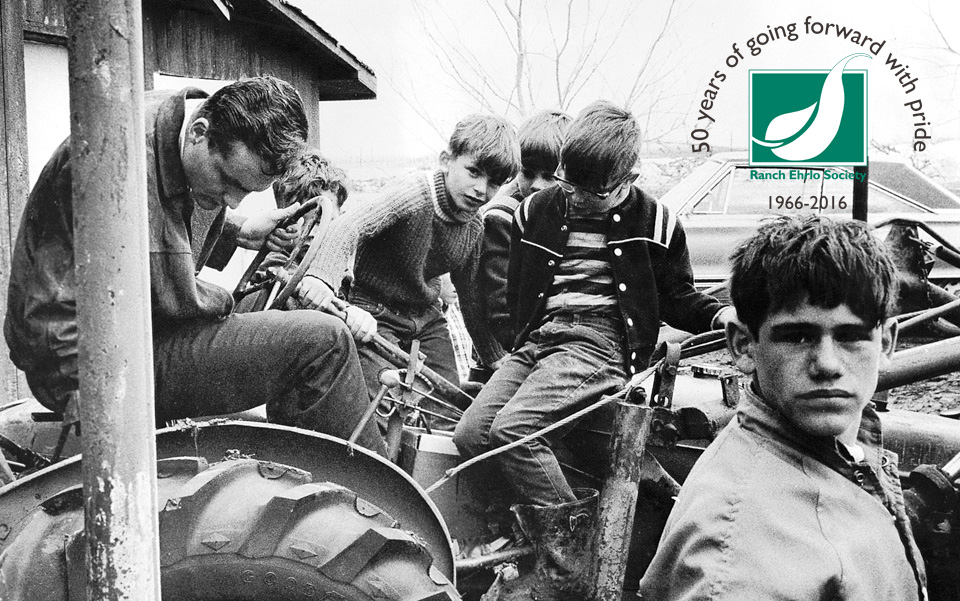In 2016, Ranch Ehrlo is celebrating a golden anniversary. In the past half century, we’ve experienced many successes and much growth. But in order to know where we’re going, we must look back at where we’ve been.
When Ranch Ehrlo was established in 1966, Otto Dreidger was the director of child welfare. At that time, residential treatment facilities in Saskatchewan had been shut down, leaving only the boy’s school – now known as Dojack Centre.
“When I became director of child welfare in 1965, (the late) Geoff Pawson was the treatment supervisor of boy’s school,” explained Otto. “He came to me one day and said he’d like to develop a private centre, because there was a real gap (in services).”
The approach
What Geoff saw at Dojack Centre bothered him – he believed a different, less punitive, approach was needed for many of the children and youth currently housed there, but in Saskatchewan there were no other options available. The solution, he believed, was a private centre.
Otto readily agreed, with two caveats – the first was that the centre took the youth that no one else would. The second was that this new program develop a continuum of services that allowed the youth to be in care long enough to form an identity with the institution.
“Troubled youth often have no security, no identity, because they’ve went from foster home to foster home, treatment centre to treatment centre. So Geoff’s private centre had to offer long term services,” Otto said of his second condition.
These caveats were easy for Geoff to agree to, as they fit well with the new approach he was looking to introduce – one that delivered treatment in a holistic, nurturing manner, designed to enhance the well-being of the
 A Ranch youth sits to fix his baseball glove, 1966
A Ranch youth sits to fix his baseball glove, 1966
individual and their families.
Work begins
An agreement was reached and a proposal was soon developed.
Geoff and Otto continued to work together, selecting a property out at Pilot Butte owned by Cliff and Julia Ehrle to become the site of the first group home. The pair also agreed that the home would use an open custody model.
In January of 1966, Geoff brought together twelve people for dinner at a Regina restaurant to discuss the proposal. The group targeted June 1, 1966 to open the facility, allowing for six months to develop a program model.
The next months were a flurry of activity. The first board of directors were elected. Lorne Mitchell, a chartered accountant from Regina, was elected president. Geoff Pawson was appointed the first executive director. And the name Ranch Ehrlo Society (link to faq) was chosen.
It opens
Finally, on June 1, 1966, the first of the 12 boys arrived at the Ranch. Within six months, the agency had grown to 20 boys.
Today, the agency employs over 800 and serves thousands through residential, educational, and community programs. It’s come a long way from Geoff’s simple but powerful vision of a better place for the youth of the day.
Otto believes he and Geoff worked well together because of their similar visions.
“(Our relationship) was really focused on what is best, in order to be able to respond to the needs of the troubled youth, the really seriously troubled youth.”
Join us to celebrate the growth and successes of Ranch Ehrlo Society at our 50th anniversary celebration, Sept. 29th at the Queensbury Convention Centre in Regina.


